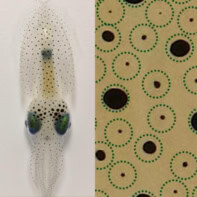Furry Logic, with its puns and wordplay, does an excellent job in covering the latest research in biophysics, and covers a huge range of animals, writes Mark Denny

Writing a popular-science book about animal biophysics is hard work. Authors must read through hundreds of research papers as the subject is so multidisciplinary, and they are unlikely to be experts in the field, which is probably why the thermodynamics of the garter snake or the bite force of the Komodo dragon are not things you would study at school. Indeed, to write this type of popular book, authors must seek out experts in the various fields that contribute to animal biophysics, and then get their heads around the latest research topics that are as arcane and varied as electric-eel batteries and mammal bladder-evacuation time (which is, no matter the size of the animal, usually around 21 seconds, in case you were wondering).
Suffice to say that there is a steep learning curve. I vividly recall my co-author Alan McFadzean saying “You do realize, don’t you Mark, that we will both be doing the equivalent of a Master’s degree every three months for the next year and a half?” as we were about to embark on our own book on this subject. Finally, there is the small matter of sifting and organizing this seething mass of applied physics (and biology and chemistry) and pitching it at the appropriate level for your intended reader.
On both counts of research and writing, Matin Durrani and Liz Kalaugher have done a good to excellent job with their book Furry Logic: the Physics of Animal Life. The beating heart of this type of book is the description of recent advances in the field, which ideally have yielded surprising or amazing insights, and that were previously unknown beyond a small number of professionals. From their main text and acknowledgements, it is clear that Durrani and Kalaugher heard straight from the mouths of many horses – they questioned many a research zoologist on many an obscure subject. For the most part, the resulting descriptions in the book are clear and interesting. If animal biophysics turns your crank, then the stories in the book will engage you from start to finish and you may find it difficult to put it down, even to perform the more mundane, though pressing aspects, of day-to-day biophysics such as eating.
Durrani and Kalaugher both work for IOP Publishing, which publishes Physics World, and have PhDs in physics and materials science respectively. Durrani has been the magazine’s editor for the past 11 years, while Kalaugher has covered environmental science for 10 years. They were inspired to write this book by a 2012 special issue of Physics World on “animal physics”.
Furry Logic is divided into six chapters that relate to six branches of physics – heat, forces, fluid dynamics, acoustics, electricity and magnetism, and light. Each chapter includes the tales of anywhere between four and eight individual animals that use the aforementioned physical phenomena in some way, shape or form. These sections within a chapter are loosely ordered under a pithy subheading, and for the most part this organization succeeds – though occasionally I wished for a more layered structure to make a clearer division between topics. The book’s conclusion is more reflective than the main text, briefly discussing the role of physics in animal structure and capabilities, as well as the reverse: the application of our understanding of animal physics to human technology.
The authors cover a wide range of recent biophysics research on mammals, insects, fish, cephalopods, birds and amphibians. With one or two brief exceptions, they have resisted the temptation to include humans in their list of amazing animals – this is probably wise. (Enough has been written about how special we are.) Their descriptions usually end with a satisfactory conclusion in that the research they report has resulted in new understanding.
Elephants hearing through their feet is a good case in point: an interesting, even astonishing, capability that researchers are only now beginning to appreciate, and which is reported gleefully and clearly in this book. Sometimes we are given a little more depth and historical research, if it provides an interesting backdrop. The broad subject matter makes for something of a scattergun approach – for example, chapter four, which deals with sound, covers everything from peacocks and bats to snakes and elephants to lobsters – but it works.
The level of presentation, with descriptions rather than deep explanations, is suitable for readers with a high-school science background.
The book does not include a bibliography, which is a pity, as it would have helped those of us who would have liked to further pursue a particular story – say that of octopus intelligence, which is highly developed (unusually so for asocial animals, as the authors point out). Sometimes I was left hanging in mid-air, like the bees whose mode of flight is covered in one of the best sections of the book. Maybe the authors could include a bibliography in a second edition.
The light and breezy style makes for easy reading. North American readers will not mind the British-English words and phrases (leg it, nosh, choppers, hanky, lugholes, crisps…) though some may grimace at the good, bad and truly awful puns and wordplay. But this is a minor quibble; the style aids readability without clouding the underlying physics. Furry Logic is a good book for anyone who is curious about the inner workings of snakes, dogs, mosquitoes, bees, ground squirrels, beetles, bats, moths, Komodo dragons, hornets, rattlesnakes, geckos, mantis shrimps, cats, seahorses, bees, peacocks, elephants, lobsters, electric eels, loggerhead turtles, ants, cuckoos, octopods or archerfish.
- Matin Durrani and Liz Kalaugher Furry Logic: the Physics of Animal Life 2016/2017 Bloomsbury Sigma £16.99/$27.00hb; £9.99/$17.00pb 304pp



